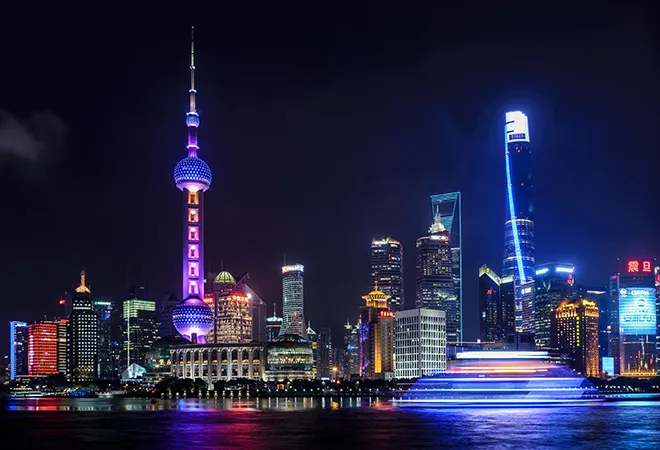On the morning of 7 September, 2010, a Chinese trawler collided with two Japanese coastguard ships near uninhabited islands in the East China Sea that are claimed by both countries. When Tokyo decided to detain the fishing boat’s captain, Beijing hit back with a vengeance. It placed an informal trade embargo on all exports of rare earth elements to Japan, its main buyer. China controls 93 percent of this group of 17 minerals, and more than 99 percent of the world’s supply. They are used in making everything from cell phones to electric motors, batteries, aircraft, wind turbines, MRI machines, as well as advanced avionics and control systems of fighter jets.
The Chinese denied the move and lifted the ban within a week. Subsequently, Beijing reduced the export quota of these minerals by 40 percent, resulting in a skyrocketing of their prices. The US, EU and Japan took the case to the WTO which ruled in their favour.
China’s high-powered economic growth has made it a leading producer and consumer of minerals and metals found around the world. As China moves towards a consumption economy powered by a growing middle class, its demand for these elements, especially the rare earths, becomes even more voracious. And Beijing has not hesitated to use strategic minerals as an instrument of foreign policy.
The world confronts two inter-related issues — first, Chinese demand could lead to a global shortfall of certain key minerals. Second, China could restrict the availability of minerals, particularly rare earths, of which it is a dominant producer or of which it has acquired control overseas.
The key player from the Chinese point of view is the National Development and Reform Commission (NDRC), their version of our Niti Aayog. But the similarity doesn’t extend far. Unlike the late unlamented Indian Planning Commission or its successor Niti Aayog, the NDRC has real teeth. Its major task is to formulate and implement strategies of economic and social development, to develop targets and policies, regulate financial structures and monitor the health of the economy. It is also tasked with maintaining the overall control of important commodities, and formulate plans for the overall imports in relation to agricultural and industrial products and raw materials. It has to work out the utilisation strategies of these materials in relation to national plans, as well as manage the strategic reserves of the country.
While the NDRC provides tactical guidance and supervision, the everyday work is done through the newly established Ministry of Natural Resources and their instruments are the huge State Owned Enterprises (SOE) of the country.
In the last two decades, China established large scale refining and production facilities of aluminium, tantalum, and cobalt. Exploration for minerals within the country has intensified, though not at the level of Australia and Canada. Beijing has also encouraged its companies, especially the SOEs to expand into international markets and invest in strategic resources globally. The biggest investments are in oil, featuring the Chinese giants, the Sinopec, Sinochem, CNOOC and CNPC.
But Chinese companies have also invested heavily in other areas in companies in Australia, Canada, sub-Saharan Africa, Mongolia, Brazil, Peru, Chile, Laos, Zambia, Zimbabwe, Democratic Republic of Congo, Papua New Guinea, Myanmar, etc. According to one estimate, the accumulated stock of Chinese overseas direct investment (ODI) in 2013 was $106 billion, making mining the number two destination for Chinese ODI.
Last year, Tianqi Lithium acquired 24 percent shares in Chile’s SQM company, making it the second largest shareholder in a major producer of a metal that is used in electric vehicle batteries. China sold more than 750,000 electric cars, some 3 percent of the total, in 2017. Beijing wants to up this to 20 percent in 2025 and position China as the dominant player in the electric car market.
The Chinese ascendancy has alarmed the United States which, though, has an abundance of such minerals but has yet become 100 per cent import dependent. This is an outcome of the restrictive US policies in permitting the mining of these minerals.
As China and the US move into a phase of political and economic competition, the world could see an intensification of the battle for strategic minerals. We could see a disruption of the current markets, or temporary shortages or, for that matter, artificial escalation of prices affecting the other parties in the game.
Countries like the US and China plan for such eventualities and maintain specialised reserves to be used in times of crisis. The US has a strategic petroleum reserve and a strategic minerals reserve. China’s State Bureau of Material Reserve is part of the NDRC and has been around for decades. India now has started building a petroleum reserve, but in the strategic minerals game it will have to dig much deeper.
This commentary originally appeared in First Post.
The views expressed above belong to the author(s). ORF research and analyses now available on Telegram! Click here to access our curated content — blogs, longforms and interviews.




 PREV
PREV


